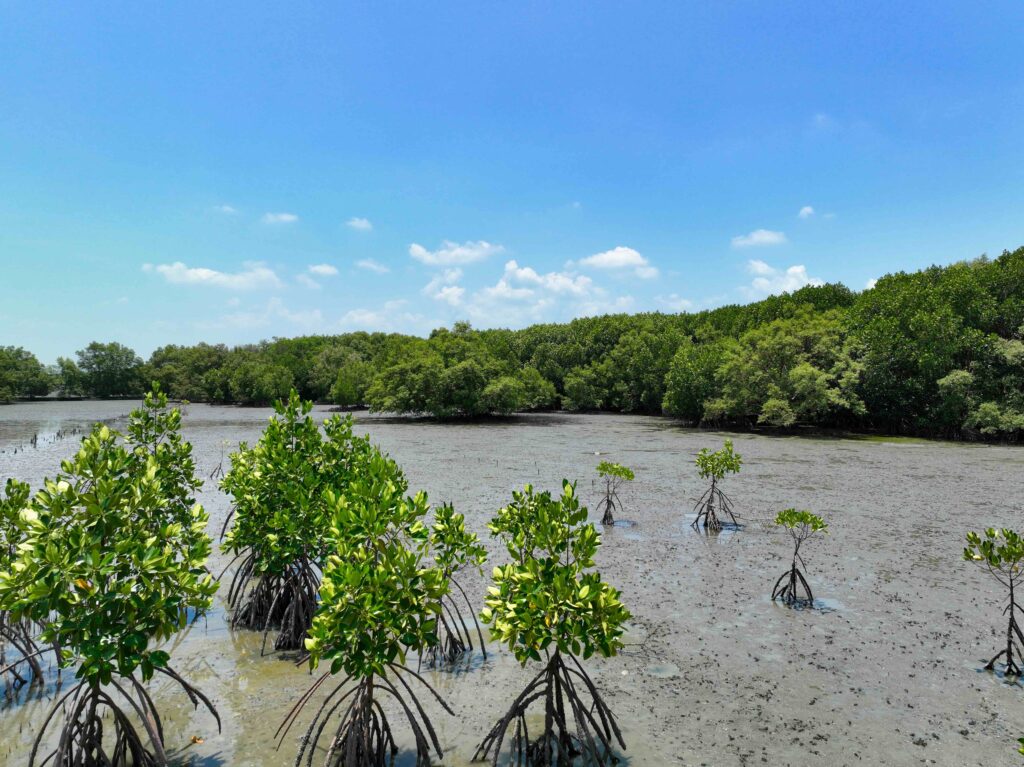Financial instruments supporting mangroves and forestry are under consideration by members of the African Natural Capital Allliance (ANCA), an executive at the organisation has said.
ANCA is in conversation with financial institutions looking to create innovative instruments that support mangroves and forests, according to Dorothy Maseke, head of ANCA’s secretariat.
“ANCA and FSD Africa are looking towards supporting a number of specialised financial instruments in mangroves and forestry,” Maseke told Carbon Pulse.
These could combine elements of bonds, guarantees, and insurance, she said. Established in 2022 by non-profit FSD Africa, ANCA is an African-led initiative whose members – including the likes of Standard Chartered, KCB, and Equity Bank – together manage assets of $390 billion.
Conservation bonds could be a key area of expansion for ANCA members, Maseke said.
“The discussions on opportunities are real. We are doing a lot in terms of connecting our partners, to support them on this journey, because many are interested. They just don’t know where to start,” Maseke said.
Regulation needs to change to support conservation-related bonds as “capital market structures in Africa do not necessarily support them,” she said.
“When the regulator supports capital market structures that will support this kind of investment, then it gives financial institutions, investors, and private equity the confidence to put their money on the table,” she said.
“It also enables fund managers or advisory firms to actually develop these bonds. Those are some of the things that ANCA will be pushing for.”
The only conservation-related bond on the continent to have been issued so far was the World Bank’s ‘rhino bond’, a $150 million issuance in 2022 in support of black rhinos in South Africa.
AFRICAN BIODIVERSITY CREDITS?
Development agencies and small project owners are driving discussion on the topic of biodiversity credits in Africa, another novel way of financing nature, Maseke said.
“Those developers who for years have been working on small projects, now all of a sudden are starting to pay attention,” she said.
“You may find some financial institutions who decide to develop the [biodiversity] credits market. Some may want to put up a biodiversity credits exchange.”
When governments drawing up nature strategies turn to private financing, they will eventually begin to work with these smaller actors on biodiversity credits, she predicted. “At some point, they’re going to converge. In some countries, they’re already converging.”
“Strong discussions” about biodiversity credits from market actors in countries including Rwanda, Ghana, Kenya, and nations around the Congo Basin are underway, she said.
“Kenya wants to go into the green economy and the bioeconomy is a key part of that. There’s a whole discussion of bioeconomies from biodiversity-rich African nations. Building a bioeconomy is the next frontier.”
However, lessons on biodiversity credits have been learned from the carbon credits market, she said. “It’s still a developing concept. It’s also coming on the backdrop of very negative press from the carbon credit side.”
“There’s still a lot of research that needs to be done in terms of, is the African market ready to go fully into it? That needs to be done fast.”
One advantage a voluntary biodiversity credits market would have over its carbon equivalent is that the former already has Indigenous Peoples and local communities at the centre, she said.
Read original article



